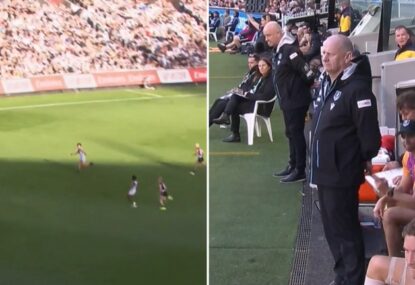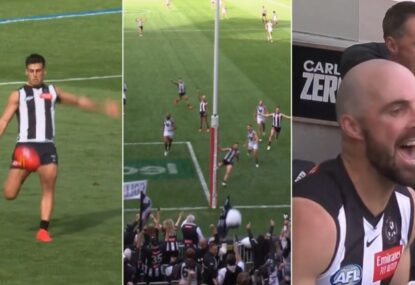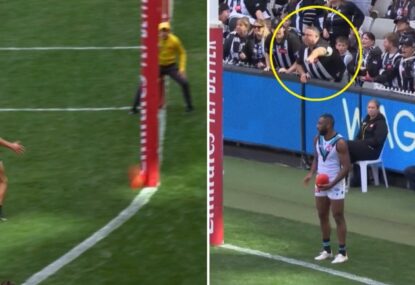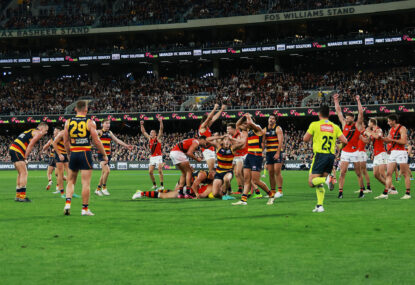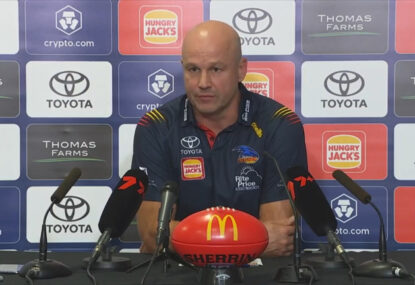I consider myself a connoisseur of AFL video games, going right back to the first console AFL game – Aussie Rules – which appeared on Nintendo way back in 1991. While the technology has improved, the game playing has not.
Just released last week is the new AFL Evolution, which might’ve been more aptly entitled AFL Devolution. It seems such a hybrid of its last two predecessors – AFL Live, and AFL Live 2 – and you’ll question if they’ve ported those games for the new consoles, and then spruced up the graphics and the interface.
They certainly haven’t spruced up the commentary, which sounds as if they bought the rights to all Dennis Cometti’s sound bites, and then added some inanity.
Now I have no problem being outplayed in any game. That’s why you play: that vicarious thrill of playing a sport you love, the competitiveness of the battle, and the desire to win the contest. But it becomes problematic when you’re continually undone by the game’s idiosyncratic gaming engine.
Here are some of the supremely stupid things AFL Devolution will subject you to…
Firstly, to mark the ball, you’ll need to push L1 to change to the player closest to the ball, use the left analog stick to run the player to the ball, use the right analog stick to out-body opponents, and then hit triangle to take the mark.
Could this have been made any more complicated? As an aside, the game suggests in its tips during loading screens to hit the right analog stick (for body positioning) as early as possible to give yourself the best chance, but this seems to predominantly result in free kicks against you for charging and pushing, not to mention that a misstep sees you careening out of position. Often, you’ll be out-marked by opponents well behind you.
Opposition are also able to constantly break tackles with embarrassing ease. It’s not unusual for an opponent to break three tackles, so the opponent runs on unimpeded, while your players are left sprawling.
There seems an amazing preponderance of one-sided free kicks. Your player is tackled, they’re penalised for holding the ball or throwing it. You lay tackle after tackle, and you either give away a free for too high or a push, or the umpire calls no prior opportunity (even when there has been).
This might be a result of holding sprint (thus modifying your tackle as aggressive), but surely the programmers would have to understand that when you’re chasing an opponent down, you do have to go as fast as you can.
Kicking takes an eternity to wind up, and quick kick buttons don’t do anything useful but almost dribble the ball to an opponent. So, if you’re in congestion, you’re doomed. Handballing is vastly unreliable and often intercepted.
As an aside, why do these games put such a qualifier on kicking distance, and that kicking too hard results in a shank? Kicking power is relatively instinctual. It shouldn’t be such a chore.
The opposition are prone to chip the ball around, which is fine. But often some of their chips can’t be going more than a few metres. It’s as if somebody forgot to put a qualifier on how far the ball had to go before it could be considered a legal mark. Compounding this is given the short distance, even if you’re manned up and/or in better position, you just won’t have time to respond.
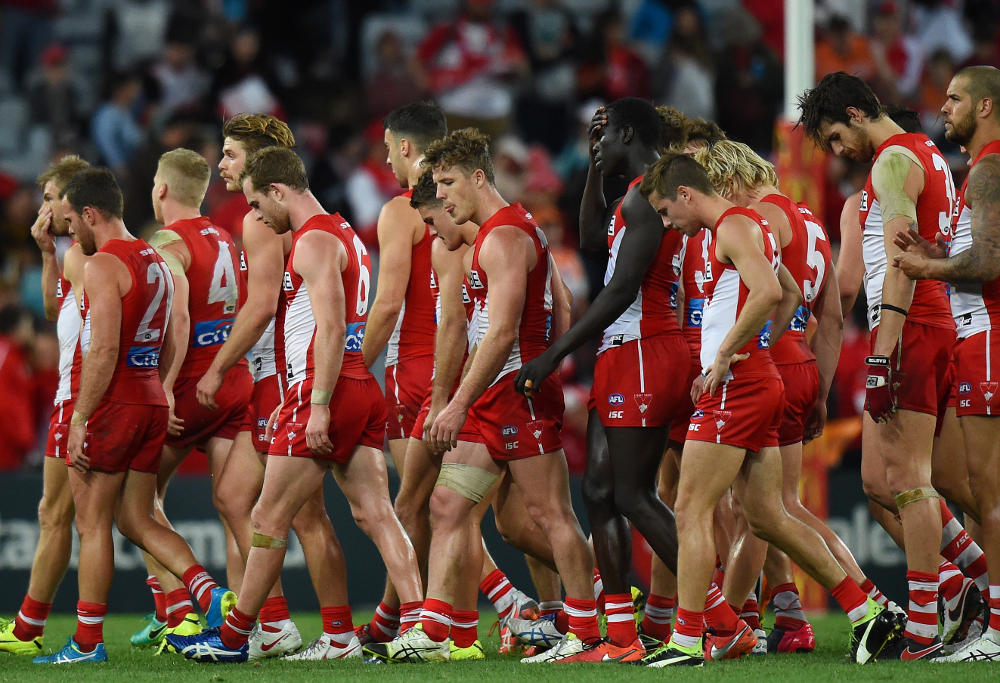
Typical to these games, the AI is also bewildering, players spreading when they should remain manned up, and manning up when they should be spreading.
And the accuracy in front of goal is problematic. A number of times I have run into open goals (right into the goal square), not done anything untoward, and yet my player will hit the post or kick it through for a behind.
I played this on a 55-inch screen, and was mindful of picking kits that didn’t clash, and in congestion you’re still lost as to who has the ball. Surely they could’ve found a better way to mark the ball-carrier?
Then, there are so many button modifiers (push one button while you’re doing something else for a different result) and accessories, you’ll need a photographic memory to keep track of them all, and inhuman reflexes to recall what you need to be pushing in the heat of a contest.
And finally, some of the players look nothing like their real-life counterparts, there are several blond players that are actually brunettes.
Australian rules is a complicated game to interpret and represent on consoles and computers, but it doesn’t do you any joy when they further complicate gameplay, and then introduce double standards – something a number of these games have been guilty of as a means of creating competitiveness, or increasing difficulty.
Going back to Aussie Rules on the Nintendo, players had substance – just by holding your position, you could hold an opponent out. You didn’t need a second analog stick to signify that you were bustling for position. AFL 98 for the PC gave you indicators as to where teammates were, so you could string together chains of possession, whereas here (as in a number of these games) often you’ll just be kicking in hope.
I didn’t check out career mode, since I was primarily interested in gameplay. But I was disappointed that there wasn’t something as basic as letting you select a default line-up, so you didn’t have to pick your ideal team line-up over and over.
It’s just little details like that which make you realise that for all their efforts, for all their hard work, they’ve created what’ll ultimately amount to just an okay game (like the predecessors). You’ll forgive the game’s idiosyncrasies simply due to your hunger to play Australian rules, but it’s a game which has failed to learn from issues of the past and will ultimately frustrate you.
































































































